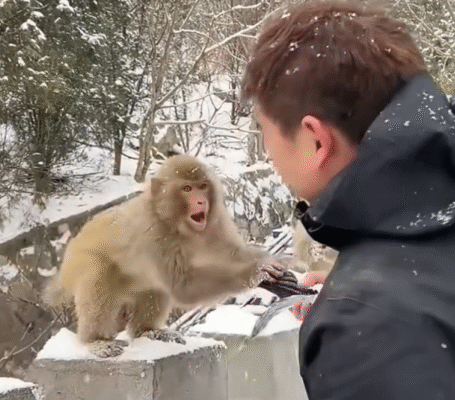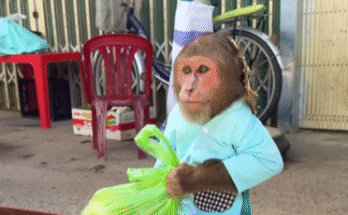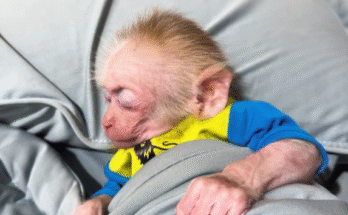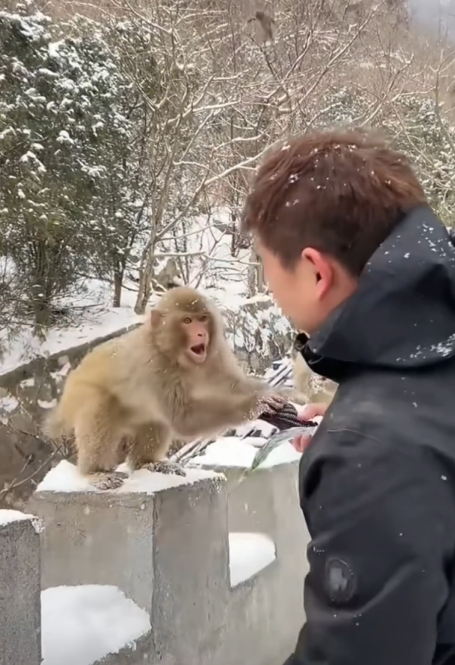
There’s a unique kind of joy that comes from watching a monkey at play. It’s not just in their nimble movements or acrobatic flips, though those are impressive enough. It’s in the subtle shifts of their expressions—the twitch of an eyebrow, the gleam in their eyes, the tilt of a head—that reveal a world of curiosity, mischief, and emotion far beyond what one might expect. Love watching the monkey’s facial expressions when you play with them is not just an experience; it’s a window into their intelligence, personality, and soul.
I remember the first time I spent an entire afternoon with a small troop of capuchin monkeys. They were lively, alert, and endlessly curious about everything around them. From the moment I stepped into their enclosure, the leader of the troop, a little female named Mina, sized me up with a careful, almost calculating gaze. Her eyes narrowed slightly, her head tilted, and her tiny lips pressed together in a way that seemed almost human. It was a warning, a challenge, and an invitation all at once. She was saying, “If you want to play with us, you better be ready.”
As I crouched down and held out a small branch for her to investigate, Mina’s expression softened. Her wide eyes glimmered with curiosity, and the corners of her mouth seemed to curl upward ever so slightly. She reached out her delicate fingers, exploring the branch, then glanced back at me with a mischievous sparkle. That tiny shift—a mixture of caution, curiosity, and amusement—was the start of what would become an unforgettable series of moments.
Playing with monkeys is unlike playing with any other animal. They are intensely observant, incredibly expressive, and delightfully unpredictable. One moment, they are serious and focused, and the next, they are grinning, grimacing, or sticking out their tongues just to see how you react. Each expression is a mini-drama, a fleeting snapshot of their thoughts and feelings. You can see intelligence, humor, frustration, excitement, and even empathy in the movement of their eyes and the twitch of their mouths.
Mina wasn’t alone. Soon, other members of the troop joined in. There was Leo, a cheeky juvenile who seemed to find everything amusing, and Pipi, an older, more reserved monkey who observed from the sidelines but occasionally joined in with a thoughtful frown or a tentative smile. Every interaction brought a cascade of facial expressions that told stories in silence. Watching them was like reading a book written in gestures, glances, and tiny movements.
At one point, I held out a small fruit for Leo, who was eyeing it hungrily. He made a face that was part excitement, part suspicion, raising his eyebrows and widening his eyes. Then, just as I offered it closer, he grimaced playfully, as if to say, “Not so fast!” The humor in that expression was undeniable. I laughed, and he immediately responded with a small, mischievous grin, flashing his tiny teeth in triumph. That exchange, a dialogue without words, was more intimate and joyful than many human interactions.
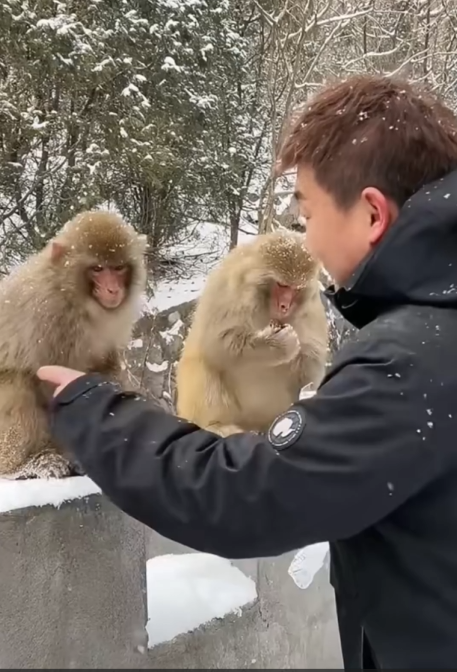
The subtlety of their facial expressions is astonishing. A slight twitch of the nose, a flick of the ear, or a soft narrowing of the eyes can communicate hesitation, curiosity, or joy. Mina would often press her lips together in concentration while solving little puzzles I set up, then suddenly break into a toothy grin when she succeeded. Watching her, I could feel the emotions behind those expressions, understanding in a small but powerful way what she was thinking and feeling.
Even moments of mischief are marked by expression. Pipi, the older monkey, would occasionally snatch a stick or a piece of fruit and retreat with a conspiratorial glint in her eye, as though she expected me to chase her. Her tiny smirk, paired with a raised eyebrow, conveyed a clear message: “Try and catch me if you can!” It was playful, teasing, and completely endearing. The sheer intelligence behind these expressions made me marvel at the complexity of their emotions and social understanding.
But it wasn’t all games and mischief. There were tender moments too, and their faces revealed vulnerability and affection in ways that were heartwarming. When a baby monkey clung to its mother, its tiny face would soften with trust and comfort. The mother’s eyes would be gentle, lips relaxed, brows smoothed, conveying safety and reassurance. Watching those interactions, I realized that the facial expressions of monkeys are not just cute—they are a language, a nuanced system of communication that reflects emotional depth and social bonds.
During one particularly quiet moment, I sat with Mina on my lap, letting her explore my hair and hands. She tilted her head, her eyes calm and focused, and gave a soft, almost imperceptible smile. It was a subtle expression, easily missed by someone not paying close attention, but I saw it. In that small curve of her lips and the warmth in her eyes, I felt a profound connection, a fleeting sense of shared understanding. It was a reminder that love, curiosity, and recognition are not uniquely human—they exist in the animal world, too, if we only take the time to observe.
Watching monkeys’ facial expressions also teaches patience and attention. You can’t rush them or force them into actions. You have to wait, observe, and respond appropriately. Each small change in their expression signals a shift in mood, intention, or desire. Learning to read these signals creates a dialogue that is both subtle and rewarding. Over time, I found myself intuitively understanding what a frown, a grin, or a curious stare meant. It was like learning a new language, one built entirely on the richness of emotion conveyed through the face.
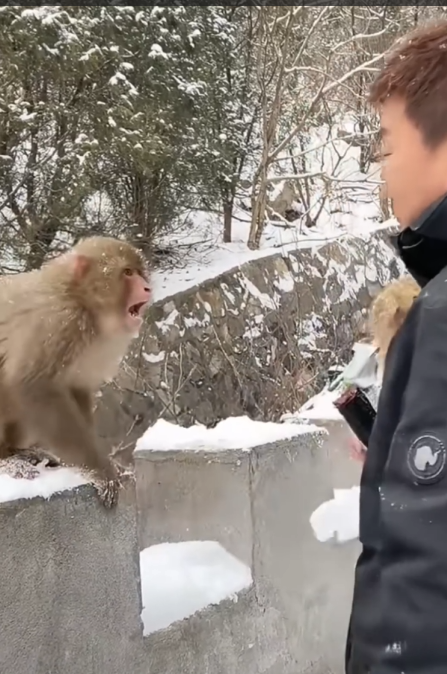
Playtime with the monkeys was not just entertainment—it was a lesson in empathy, communication, and joy. Every facial expression, from the smallest twitch of a whisker to the widest grin, carried meaning. Watching them, I felt connected not only to the monkeys but to the larger rhythm of life in the forest. Their expressions told stories of survival, curiosity, mischief, love, and sometimes sorrow, reminding me that emotion is universal, transcending species and language.
As the sun began to set, casting warm golden light across the enclosure, the monkeys began to settle. Some curled up with their mothers, some nibbled quietly on the last scraps of fruit, and some lounged lazily on branches. Mina looked at me one last time, her eyes soft and warm, her lips forming a gentle, almost imperceptible smile. It was a farewell of sorts, a silent acknowledgment of the bond formed during play, a promise that our shared moments would linger in memory.
Love watching the monkey’s facial expressions when you play with them is more than simple fascination—it is an invitation into their world. Every expression is a story, every glance a line of dialogue, every smile or frown a testament to intelligence and emotion. Their faces are mirrors of feeling, windows into a mind that is alert, curious, and rich with personality. To watch them closely is to witness the beauty of life itself: playful, unpredictable, emotional, and profoundly connected.
When I finally left the enclosure, the images of their faces stayed with me. Mina’s mischievous grin, Leo’s playful scowl, Pipi’s thoughtful frown—they were etched in my memory, reminders that intelligence and emotion are far more widespread in the animal kingdom than most people realize. And every time I thought of those expressions, I felt a deep warmth, a lingering sense of joy, and a profound appreciation for the small, complex lives that inhabit the world alongside us.
Play with monkeys is not just amusement—it is an emotional exchange, a bridge between species built through expression, understanding, and care. And the love in their faces, the humor in their eyes, and the curiosity in their gazes is a gift, one that reminds us of the beauty of life, the richness of connection, and the joy of simply watching and understanding. 😉💕
